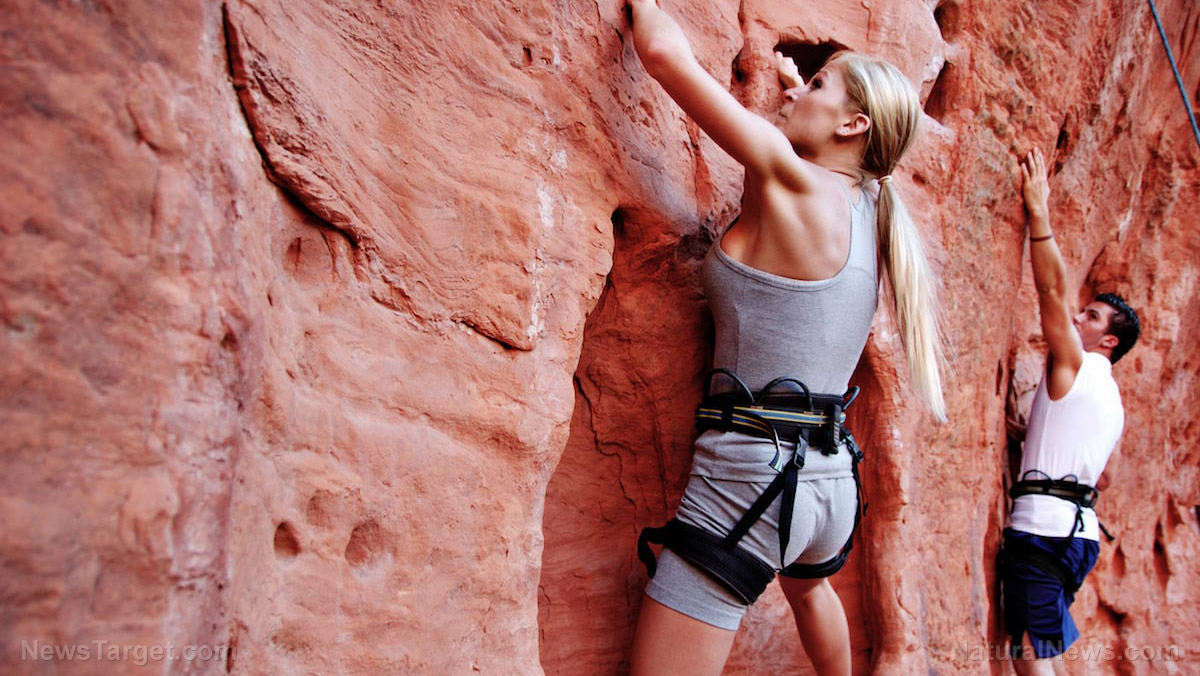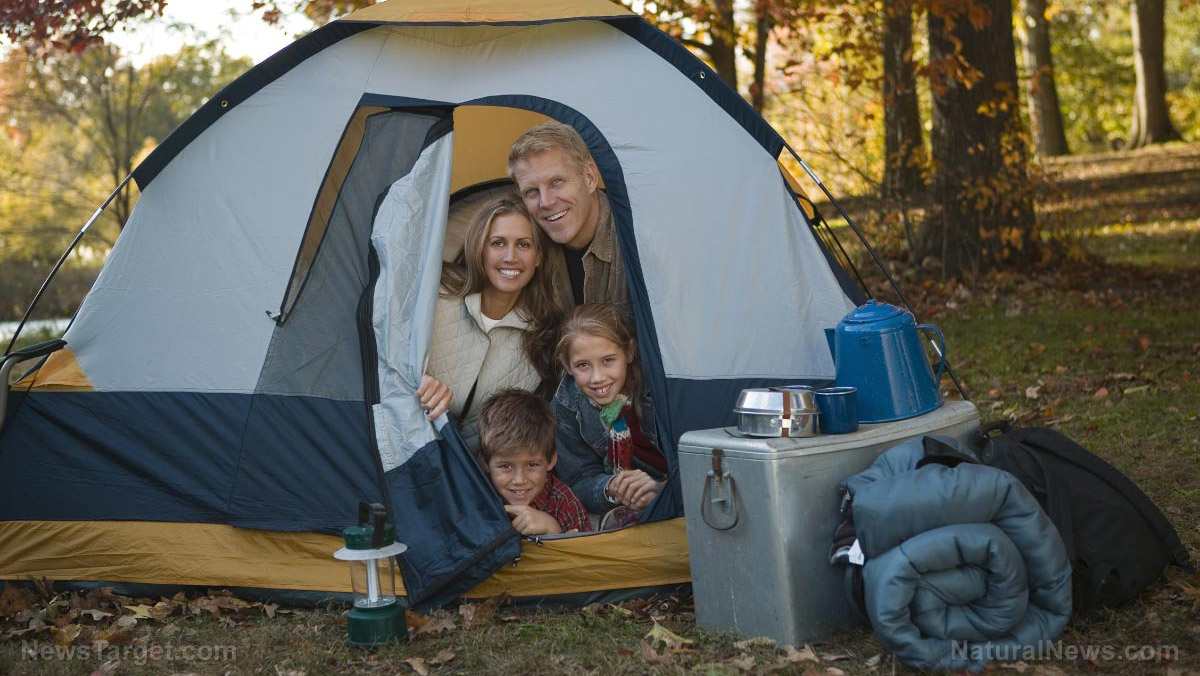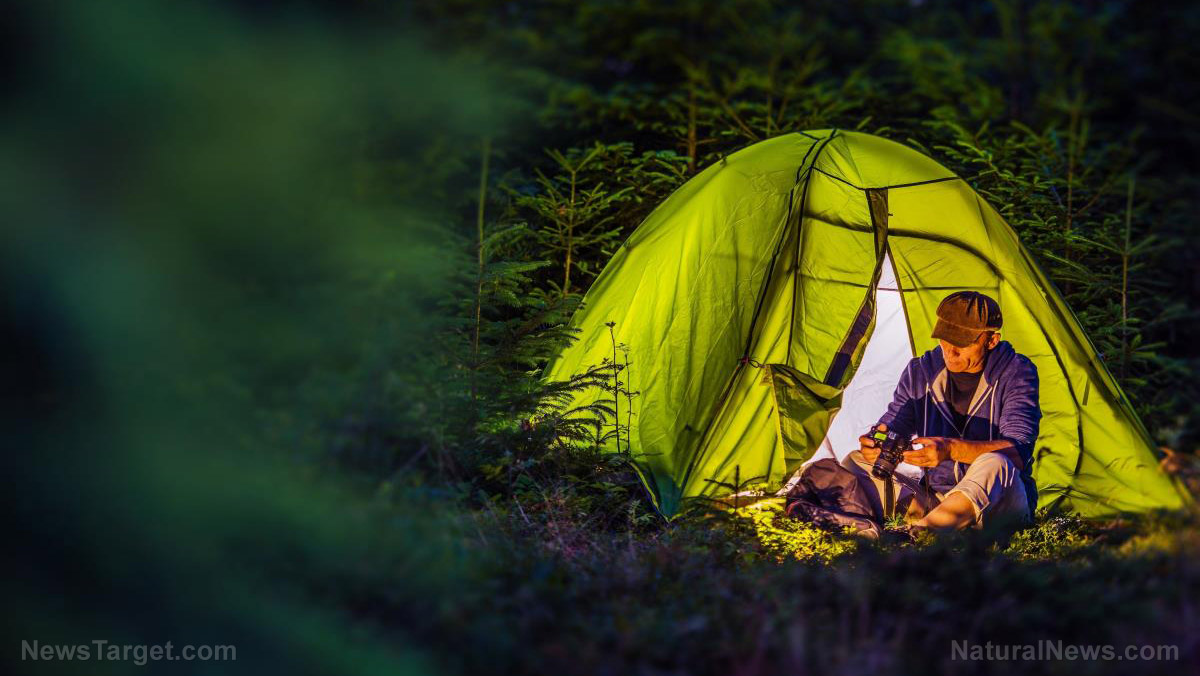Hassle-free adventures: The best camping and hiking gear for exploring nature
02/16/2019 // Rita Winters // Views
Tags: adventure, adventure gear, camping gear, exploring, Gear review, hiking gear, off grid, outdoor gear, outdoors, preparedness, prepper, prepping, survival

- You don't go without a bag -- The backpack is the most important item you should have, since this will carry all your stuff. Make sure that it's lightweight but sturdy, secure, and spacious. The capacity of your backpack will determine how gear-prepared you will be. When you can, get a waterproof one, or bring large plastic bags that don't easily tear.
- Where do we go from here -- If you're going on a trip without a guide, navigational gear is absolutely basic. A traditional wax paper map and a compass are essential, since your smartphone is really out of the question, especially on long and rough trips.
- You are what you wear -- Aside from the shirt and pants you'll be wearing on the way there, you'll want to pack an extra set of clothing. Make sure you have a hooded jacket or sweater for the long, cold night. Many also overlook the importance of wearing socks, but you should always wear a pair. Don't forget to bring an extra set (or two)! Socks can serve as a small pouch or water filter. These are the only comfort items you will need to bring, so make sure everything you wear, including your shoes or sandals, are tough, weather-resistant, and comfortable.
- A home away from home -- Comfort really isn't part of any adventure, so only bring the essentials. A tent and a sleeping bag would suffice. You can also bring a tarp and some rope to substitute for a tent.
- Think MacGyver -- An outdoor knife or multi-tool will be your best friend during your trip. Don't forget to bring a box of matches or a reliable butane lighter so you won't rely on rubbing sticks. You can also pack a penlight or a long-lasting pocket torch for those dark caves you want to spelunk in. Make sure to pack an insect repellent as well.
- The basis of energy -- It's highly unlikely to go on a trip without food, so make sure you have some space for this! Canned goods are great, since you can use the empty can to boil unsafe water. Trail mix is also highly recommended since they give you the calories you need and save much-needed space in your backpack. Your water bottle should be at least a liter in capacity. If you can, bring two. You can also get water-filtering bottles so you can replenish your supply of water on the go. (Related: Best Self Filtering Water Bottles for Green Healthy Lifestyles.)
- Accidents can happen -- A lot of people fail to bring a first-aid kit, because they expect their trip to be rather easy. But accidents happen all the time, and it pays to be ready for it. You can easily buy one at your local gear store or pharmacy. If you want to make your own health kit, make sure to have: bandages, pain-relief medication, antihistamines, antiseptic liquids or wipes, antibacterial ointment, gauze pads, safety pins, and a first-aid manual or information card.
If you're only bringing the essentials as listed above, you'll still have extra space for your electronics like your smartphone, camera, and power bank. You do not need to bring jewelry, your camera zoom lens, or a pillow. Avoid bringing junk food like chips, since the air inside the bags take up too much space, and the salt content will dehydrate you faster. Sunscreen is optional, but necessary for sensitive skin types. Instead of bringing a box of matches (which can get wet), you can bring a magnesium fire starter, or a flint-and-steel tool.
Sources include:
Related Topics
adventure adventure gear camping gear exploring Gear review hiking gear off grid outdoor gear outdoors preparedness prepper prepping survivalLatest News
Related News
06/23/2021 / By Divina Ramirez
08/05/2018 / By Russel Davis
Take Action:
Support Natural News by linking to this article from your website.
Permalink to this article:
Copy
Embed article link:
Copy
Reprinting this article:
Non-commercial use is permitted with credit to NaturalNews.com (including a clickable link).
Please contact us for more information.
Please contact us for more information.



















